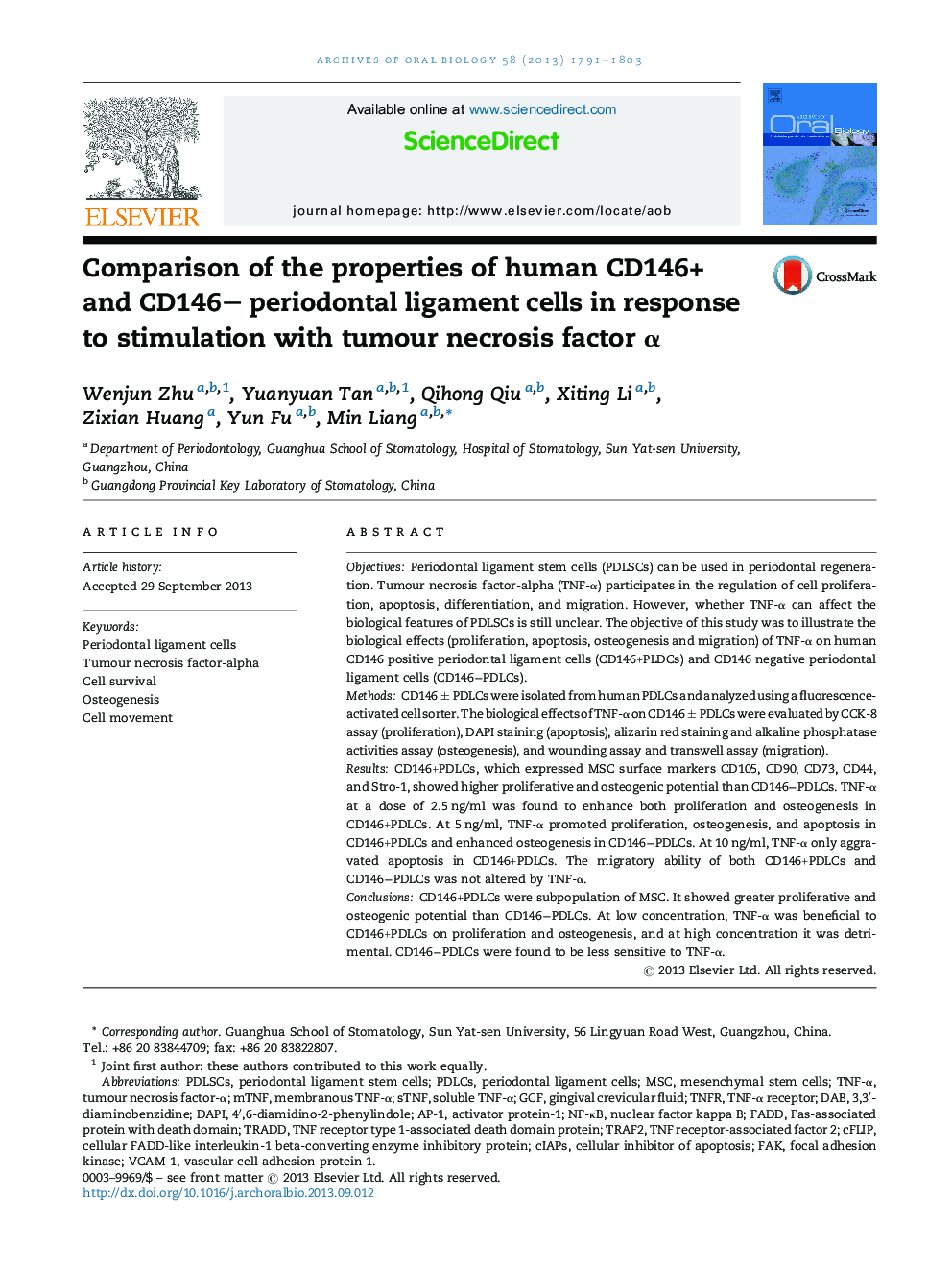| Article ID | Journal | Published Year | Pages | File Type |
|---|---|---|---|---|
| 3120911 | Archives of Oral Biology | 2013 | 13 Pages |
ObjectivesPeriodontal ligament stem cells (PDLSCs) can be used in periodontal regeneration. Tumour necrosis factor-alpha (TNF-α) participates in the regulation of cell proliferation, apoptosis, differentiation, and migration. However, whether TNF-α can affect the biological features of PDLSCs is still unclear. The objective of this study was to illustrate the biological effects (proliferation, apoptosis, osteogenesis and migration) of TNF-α on human CD146 positive periodontal ligament cells (CD146+PLDCs) and CD146 negative periodontal ligament cells (CD146−PDLCs).MethodsCD146 ± PDLCs were isolated from human PDLCs and analyzed using a fluorescence-activated cell sorter. The biological effects of TNF-α on CD146 ± PDLCs were evaluated by CCK-8 assay (proliferation), DAPI staining (apoptosis), alizarin red staining and alkaline phosphatase activities assay (osteogenesis), and wounding assay and transwell assay (migration).ResultsCD146+PDLCs, which expressed MSC surface markers CD105, CD90, CD73, CD44, and Stro-1, showed higher proliferative and osteogenic potential than CD146−PDLCs. TNF-α at a dose of 2.5 ng/ml was found to enhance both proliferation and osteogenesis in CD146+PDLCs. At 5 ng/ml, TNF-α promoted proliferation, osteogenesis, and apoptosis in CD146+PDLCs and enhanced osteogenesis in CD146−PDLCs. At 10 ng/ml, TNF-α only aggravated apoptosis in CD146+PDLCs. The migratory ability of both CD146+PDLCs and CD146−PDLCs was not altered by TNF-α.ConclusionsCD146+PDLCs were subpopulation of MSC. It showed greater proliferative and osteogenic potential than CD146−PDLCs. At low concentration, TNF-α was beneficial to CD146+PDLCs on proliferation and osteogenesis, and at high concentration it was detrimental. CD146−PDLCs were found to be less sensitive to TNF-α.
